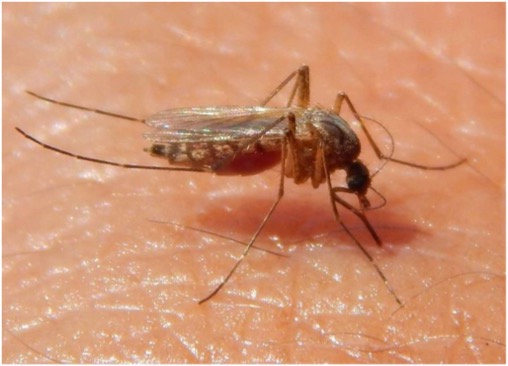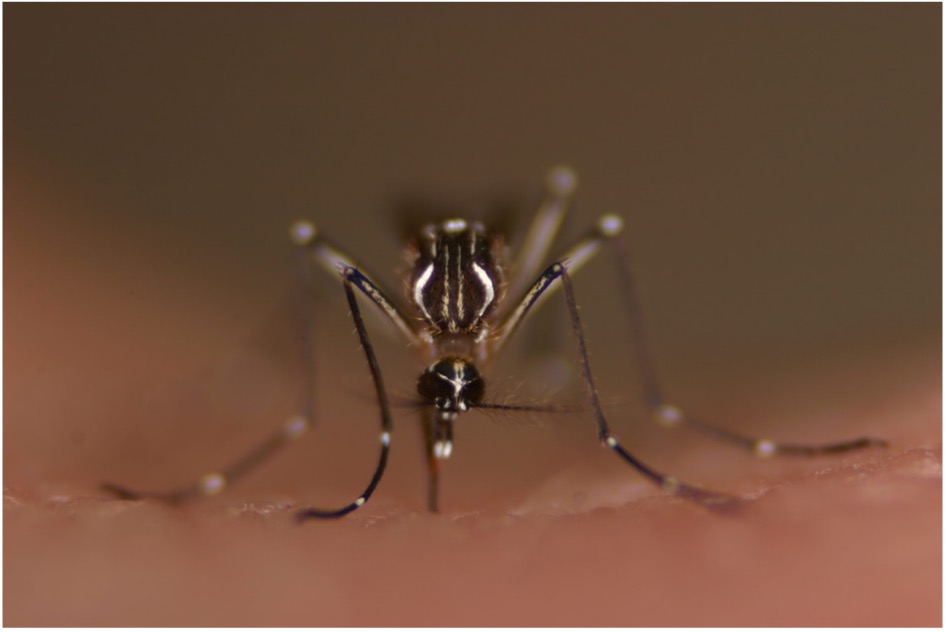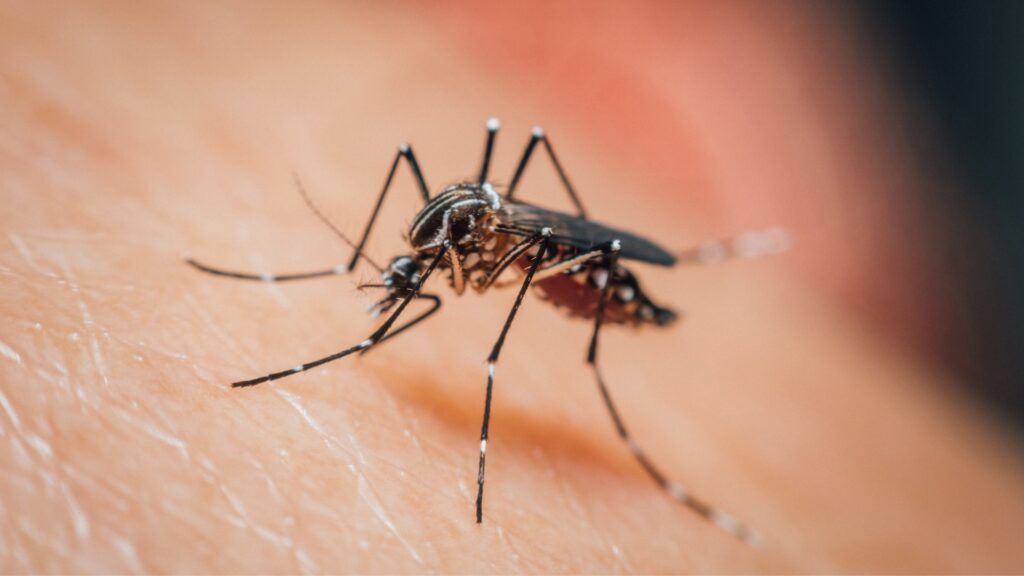Summer in Texas is nearing its end, and we’ve all felt the heat rise. With higher temperatures comes more insect activity, especially mosquitoes. These flying insects have made a name for themselves recently in the media as agents of spreading several diseases across the country and globe.
What is mosquito-borne illness?
Mosquito-borne illnesses are those that are spread by infected mosquitoes. Mosquitoes can become infected when they bite an animal or person who is infected with a virus or parasite. Mosquitoes can then spread the disease to you through their bite. These diseases can also be spread to animals, like livestock, infecting them.1
Several diseases can be spread by mosquitoes such as West Nile, Zika, Dengue, Chikungunya, Malaria, and Eastern Equine Encephalitis. While the case-counts of these diseases have remained low, they have been increasing in the US as we reached July, August, September, and October as they love the hot, humid months of the year.
Historically, mosquito-borne diseases have been prevalent in regions like the tropics and subtropical regions due to their abundant water sources providing an ideal breeding ground for mosquitoes. However, due to factors such as climate change and increased international travel, mosquito-borne disease is now becoming more prevalent in the United States, particularly in the regions of south and coastal areas.
Current cases in Texas
In Texas, mosquitoes-borne disease have been increasing. as well like the rest of the US. Particularly, we have seen cases of West Nile and Dengue.
There have been a reported 50 cases of West Nile across the state with the first reported in July. Currently, six deaths have been reported.2
There have been a reported 43 cases of Dengue Fever across the state. Currently one death has been reported.2
What is West Nile Virus? Dengue?



West Nile Virus is caused by a flavivirus (a small virus whose family is responsible for other diseases such as yellow fever and hepatitis C) spread typically by Culex mosquito species.
While most infections are asymptomatic (~80%), some people may develop flu-like symptoms along with a possible rash on the body, and a smaller percentage may experience severe neurological complications, such as meningitis or encephalitis.4 Dengue (also known as Dengue Fever) is a viral disease also spread by Aedes aegypti and Aedes albopictus mosquitoes. It causes symptoms like high fever, severe headache, joint and muscle pain, and a rash that spreads on most of the body. Severe cases can lead to dengue hemorrhagic fever or dengue shock syndrome, both of which can be life-threatening if left untreated.5
Most cases of Dengue in the US are associated with those who have recently traveled to endemic or locally occurring areas of the disease. The types of mosquitoes that spread dengue are found in Texas.
In the US and Texas, severe diseases from these viruses are rare. However, certain populations should be aware of the higher risk of complications from these viruses such as older adults, immunocompromised, outdoor workers, and those who are pregnant and/or nursing.
How can I protect myself from mosquitoes?
There are several strategies and precautions that can be taken to help reduce the risk of a mosquito bite and subsequently, the spread of a mosquito-borne disease:1
- Use insect repellent with ingredients like DEET, picaridin, or oil of lemon eucalyptus.
- Wear long sleeves and pants to cover exposed skin, especially in mosquito-prone areas.
- Use mosquito nets around sleeping areas, especially in high-risk regions.
- Install window and door screens to keep mosquitoes outside your home.
- Eliminate standing water around your home, such as in buckets, tires, or plant pots, to prevent mosquito breeding.
- Change water in dog dishes daily and wading pools and bird baths several times a week.
- Use outdoor mosquito repellents like citronella candles or coils.
- Stay indoors during peak mosquito activity times, usually dawn and dusk.
- Keep air conditioning on or use fans to reduce mosquito presence indoors.
- Treat clothing and gear with permethrin, an insect-repelling chemical.
- Maintain landscaping by trimming tall grass and bushes, where mosquitoes tend to rest.
By taking these precautions, you will help protect yourself and others from potential diseases from mosquitoes.
Current numbers of all reportable mosquito-borne illnesses can be found at the Texas Department of State Heath Surveillance’s Arbovirus Weekly Activity Reports.
- Texas Department of State Health Services. (n.d.). Mosquito-borne diseases. https://www.dshs.texas.gov/mosquito-borne-diseases
- Texas Department of State Health Services (2024, September 10). DSHS Arbovirus Weekly Activity Reports. https://www.dshs.texas.gov/mosquito-borne-diseases/dshs-arbovirus-weekly-activity-reports
- Texas A&M AgriLife. (2020, August 10). West Nile on the rise in Dallas, Tarrant counties. https://agrilifetoday.tamu.edu/2020/08/10/west-nile-on-the-rise-in-dallas-tarrant-counties/
- Texas Department of State Health Services. (n.d.). West Nile Virus. https://www.dshs.texas.gov/mosquito-borne-diseases/west-nile-virus
- Texas Department of State Health Services. (n.d.). Dengue. https://www.dshs.texas.gov/mosquito-borne-diseases/dengue
- Texas A&M AgriLife Extension Entomology. (n.d). Insect Factsheets. https://extensionentomology.tamu.edu/resources/insects/


